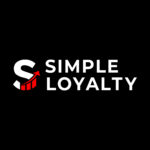Estimated Reading Time: 11 minutes
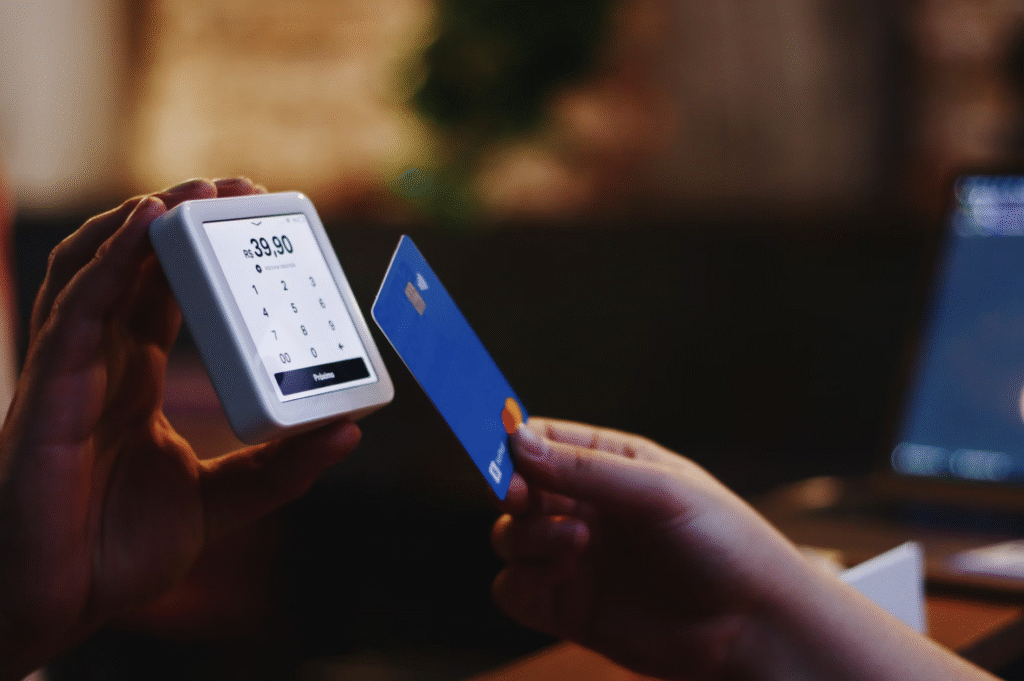
Imagine this: you open a small clothing store. Customers pop in once or twice, even when you slash prices with huge sales.
Frustrating, right?
Now, you launch a simple loyalty program and suddenly, shoppers return again and again, spending more while you spend less on ads.
That’s the magic of customer loyalty.
Today’s shoppers aren’t loyal to discounts anymore. They crave appreciation, smooth experiences, and perks that make them feel valued.
In this article, we’ll explore why loyalty programs matter, the criteria we used to rank the best ones, and what retailers can copy to keep customers coming back.
Why Loyalty Programs Matter for Retailers
A loyalty program isn’t just about points or discounts; it’s about keeping good customers for the long run.
Getting a new customer costs 5–25 times more than keeping a current one. And if you can keep just 5% more customers, profits can jump by 25–95%.
A loyalty program helps you:
- Bring customers back more often
- Build trust and stronger relationships
- Learn what customers like through data
- Cut marketing costs by focusing on loyal shoppers
Simply put, loyalty programs turn one-time buyers into repeat customers, and that’s great for business.
Criterias for Ranking the Best Retail Loyalty Programs
Customer Engagement and Ease of Use
The best programs are fun and easy to use. Signing up and earning rewards should be simple, like Starbucks’ “scan and earn” system.
Value of Rewards
Rewards should feel worth it. Free drinks, birthday gifts, cashback, whatever it is, customers should see real value fast.
Omnichannel Experience
Shoppers move between stores, apps, and websites. Good programs work everywhere, like Starbucks Rewards, which syncs both in-store and online purchases.
Innovation and Differentiation
Top brands make loyalty exciting, not just about discounts. Nike gives members special access to events and products. IKEA offers community perks and workshops.
Best Retail Loyalty Programs Ranked
SimpleLoyalty
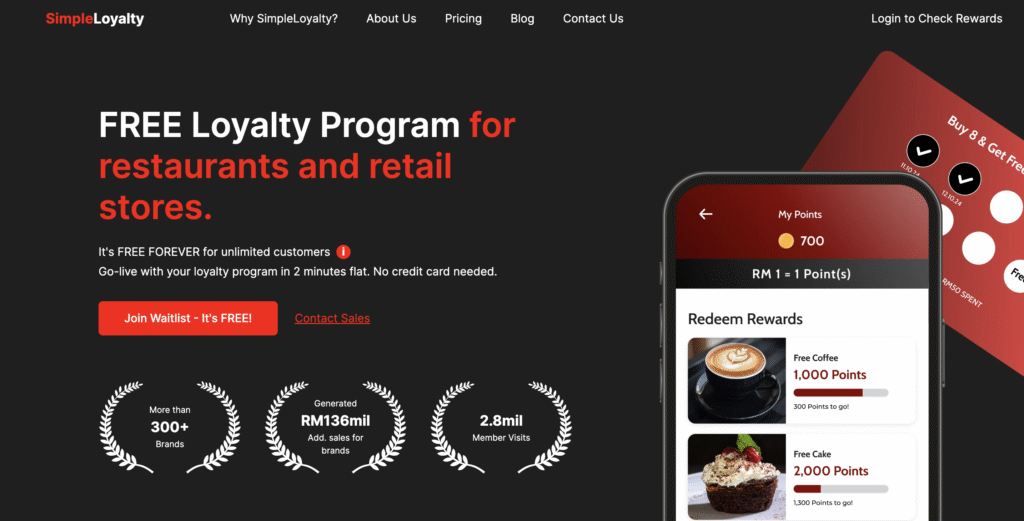
Best for: Small and medium stores that want an easy start.
SimpleLoyalty helps business owners set up loyalty programs fast no tech skills needed.
You can offer points, vouchers, or cashback, all managed from one dashboard.
It works both in-store and online. For example, a café can give a free drink after five visits, or a pharmacy can reward customers for buying vitamins regularly.
Why it’s great:
- Easy setup
- Works across all channels
- Customizable rewards and instant analytics
- Smart automation with customer data
Eber
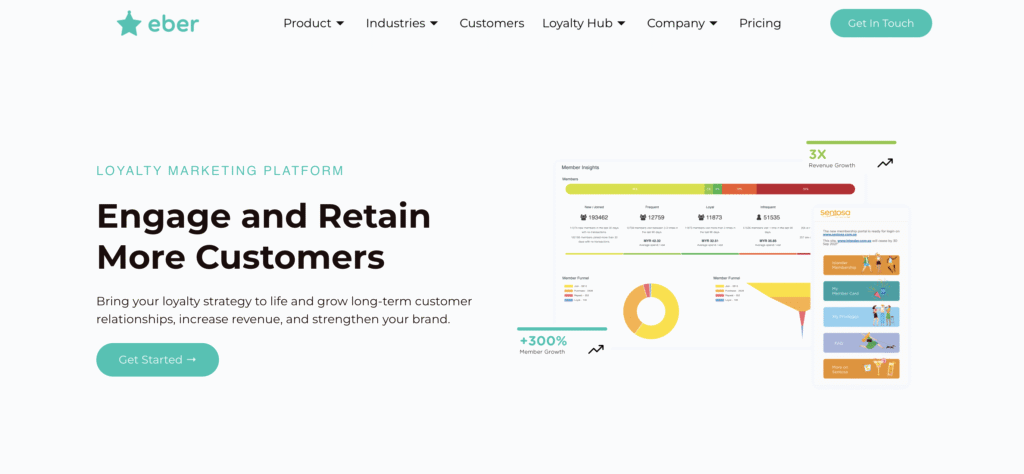
Best for: Retailers who want data and automation.
Eber combines points, referrals, and membership tiers in one place. It also sends personalized offers based on what customers buy, like how Watsons Malaysia sends beauty or health deals.
Why it’s great:
- Smart automation with customer data
- Works with email and SMS marketing
- Strong analytics for insights
Advocado
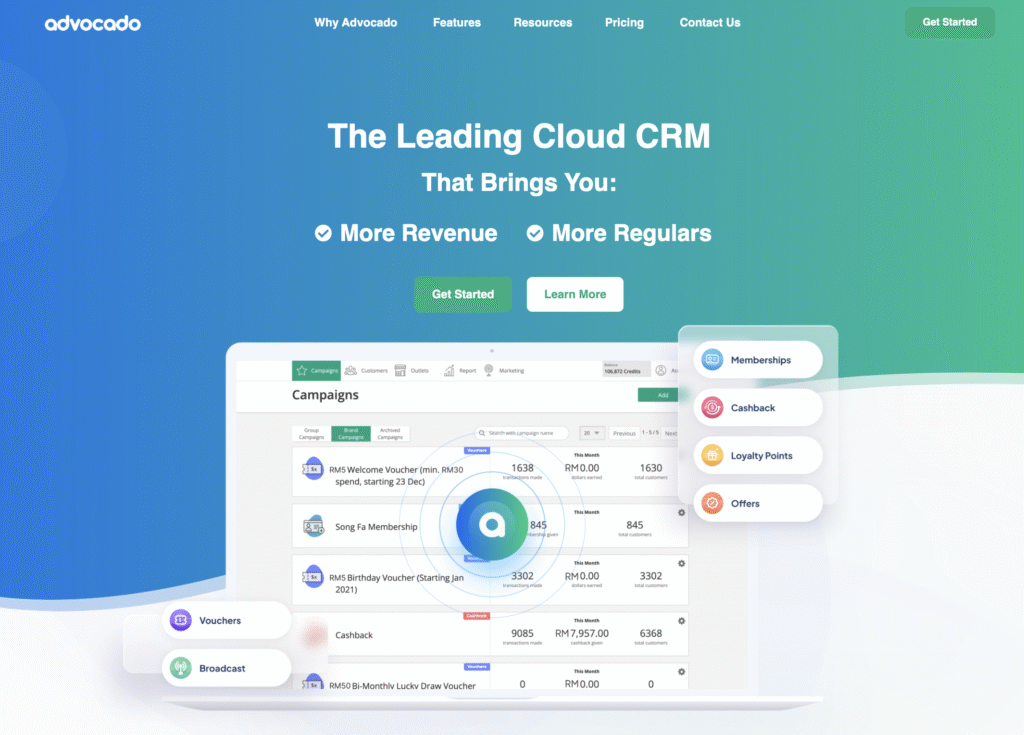
Best for: Brands that want loyalty and marketing tools.
Advocado helps brands reward not just shopping, but also actions like sharing posts or writing reviews. It builds a real community around your brand.
Why it’s great:
- All-in-one loyalty and marketing system
- Rewards social engagement
- Perfect for lifestyle and beauty brands
Square Loyalty
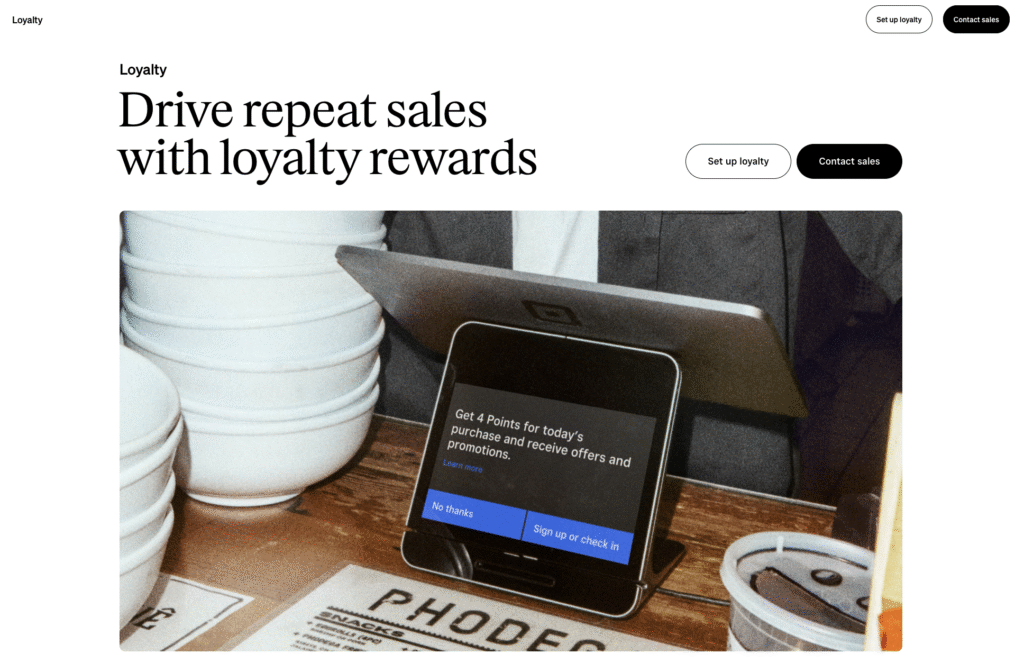
Best for: Small stores already using Square POS.
Square Loyalty turns every sale into a chance to earn rewards no extra app required.
It’s simple: “Buy X, get Y.” Great for cafés, salons, or boutiques.
Why it’s great:
- Built into Square POS
- Fast setup and instant rewards
- Works online and in-store
Best Retail Loyalty Programs
Starbucks Rewards
Starbucks is famous for having one of the most user-friendly loyalty programs out there. Through their mobile app, customers collect “stars” every time they buy something and can redeem them for free drinks or special offers.
The program has over 33.8 million active members in the U.S., and these rewards members account for more than 50% of Starbucks’ sales.
What’s really cool is that the program sends personalized promotions based on what customers usually order. Plus, it works everywhere customers can order online, pick up in-store, or dine in, and they’ll still earn rewards no matter what.
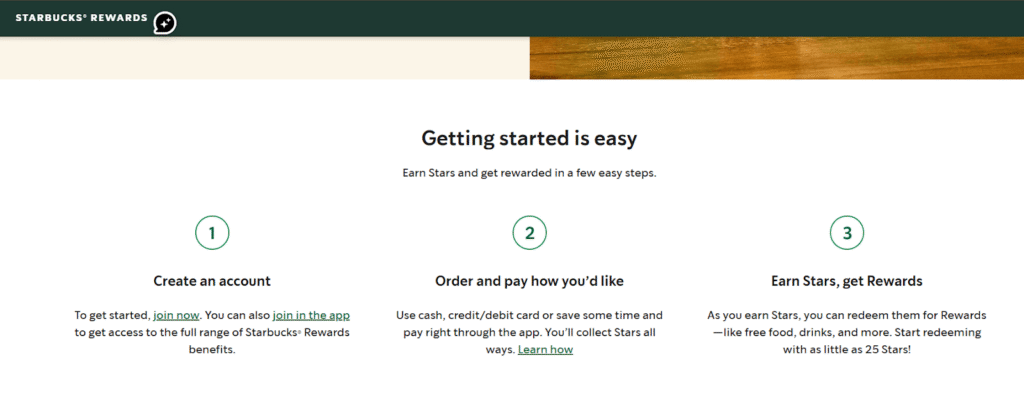
What retailers can steal from this: Create a simple digital system, whether it’s a mobile app or basic loyalty platform. The key is to ensure that rewards are clear and customers can feel the benefits quickly, so they feel like it’s worth staying loyal.
Sephora Beauty Insider
Sephora built a super popular loyalty program using a tiered system: Insider, VIB, and Rouge.
The higher the level, the bigger the rewards for free products, early shopping, beauty classes. Not just discounts, but a special, VIP feeling.
Here’s the psychology behind it: tiered programs play on our natural drive for status and achievement. When customers see they’re “VIB” but could move up to “Rouge,” they feel inspired to spend a little more to reach that next level.
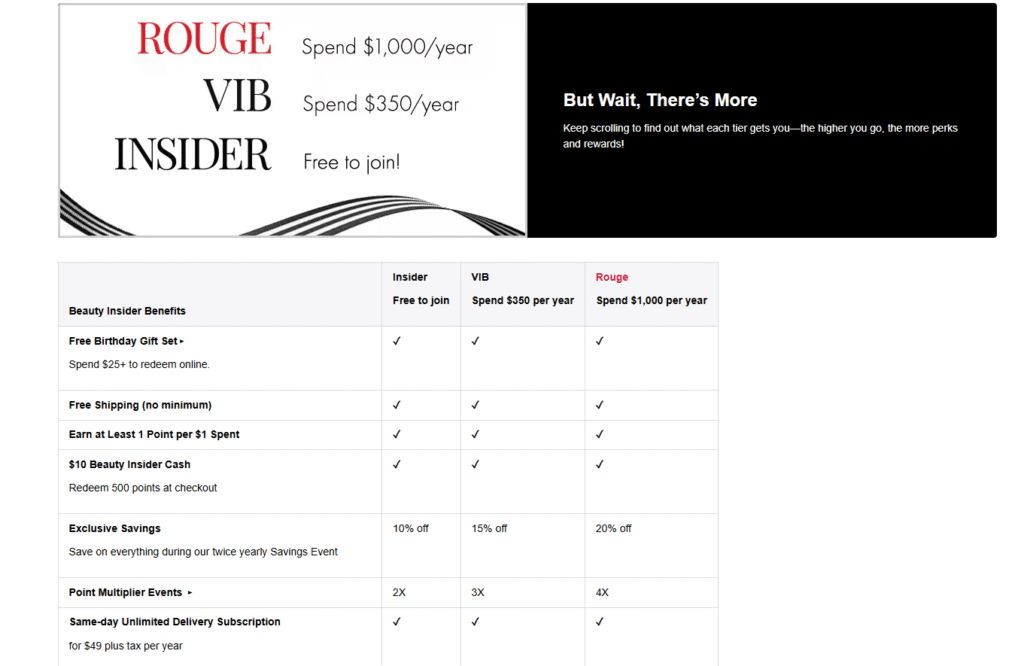
It’s called the “progress effect.” The closer people get to a goal, the harder they try to reach it. This builds an emotional connection that’s about more than just getting discounts it makes customers feel accomplished.
What retailers can steal from this: Create different loyalty levels (like Bronze, Silver, Gold) to encourage customers to climb higher. It makes customers more attached to your brand because they want to “unlock” the next level of rewards.
IKEA Family
IKEA Family is way more than just a discount card. Members get access to free workshops, special events, and exclusive prices on certain items.
They also enjoy free coffee or tea every time they visit the IKEA restaurant, and even an extra 90-day return window or extended warranty on certain products.
The program creates a real sense of community around the brand. Customers don’t just shop at IKEA, they feel like they’re part of the “IKEA Family.”
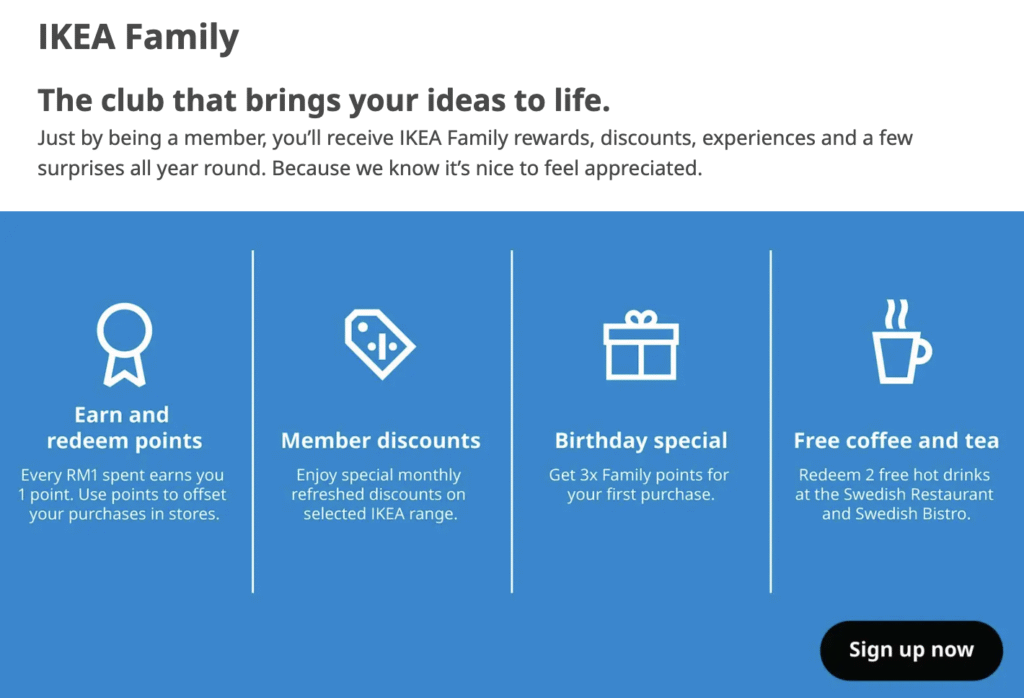
What retailers can steal from this: Don’t just give discounts. Give extra value with special things like product previews, meet the founder, or invites to private events.
Watsons VIP Card
Watson’s VIP Card is popular because it’s so simple. Customers easily understand that every purchase earns points that can be redeemed for discounts or gifts.
Members also get special deals throughout the year, including birthday surprises just for them.
The best part? You can see and use your rewards quickly, no waiting around or jumping through hoops.
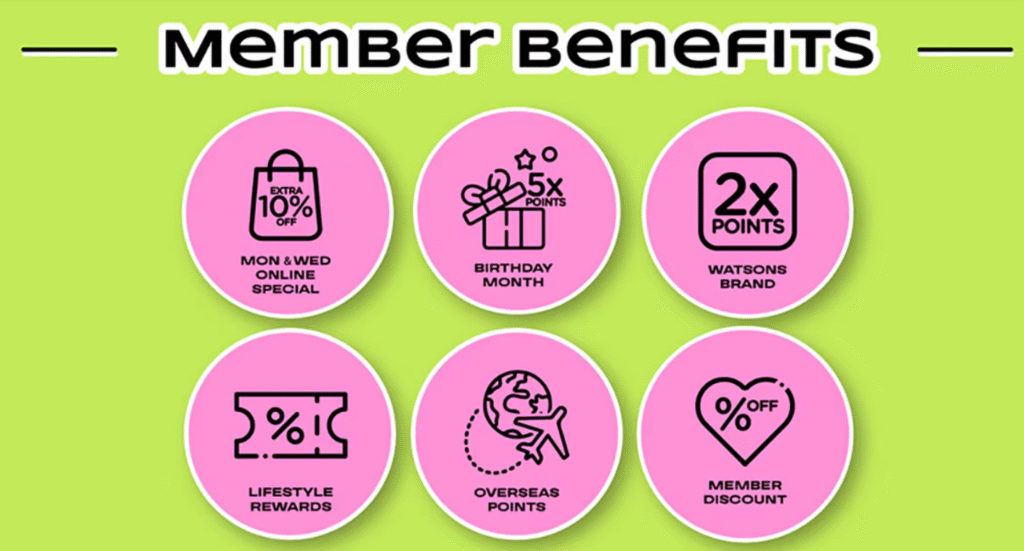
What retailers can steal from this: Keep it simple. Make sure your program is easy to understand without too many complicated rules. The faster customers feel the benefits, the more likely they are to stay loyal.
Nike Membership
Nike takes a different approach with their free membership program.
Instead of offering points or discounts, Nike gives members exclusive access to new product drops, events, and personalized training content through the Nike app.
The real power of this program is how it builds a lifestyle and community around the brand. Members feel like part of something bigger, motivated, inspired, and connected, not just shoppers looking for deals.
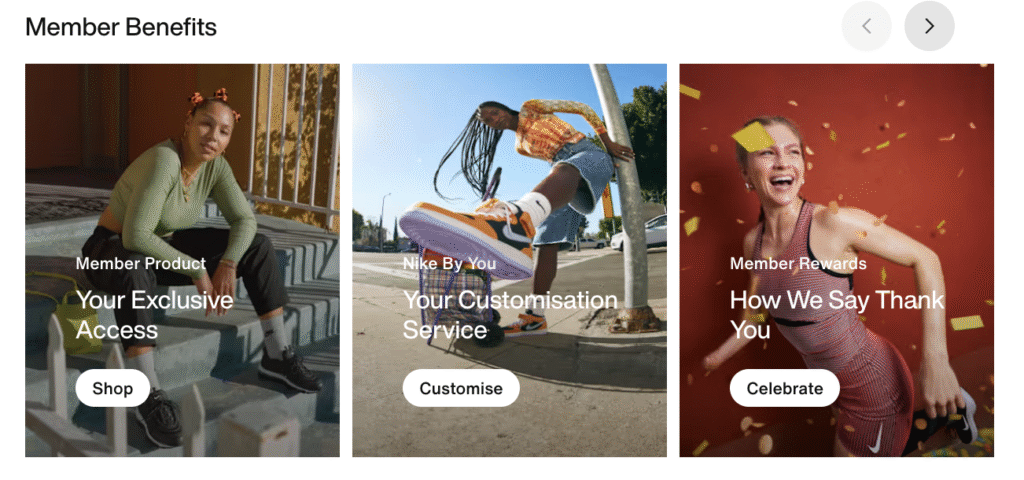
What retailers can steal from this: Loyalty doesn’t always mean discounts.
You can build strong connections by offering experiences, education, or insider access that make customers feel valued and seen.
When people feel part of your brand story, they stay loyal even without price cuts.
Key Takeaways for Retailers
Common Features Across Top Programs
1. Keep it simple
The best loyalty programs are easy to understand. Customers shouldn’t need to read long rules or guess how points work.
A simple system like “Spend $1, earn 1 point” or “Show your QR code to collect rewards” keeps people interested and coming back.
2. Reward quickly
No one likes waiting months to see a reward. Quick wins keep customers motivated.
For example, “Buy 5, get 1 free” makes shoppers feel they’re always close to earning something.
The faster people see the benefit, the more likely they’ll stay loyal to your brand.
3. Personalize offers
Use customer data to send the right deals at the right time. When someone always buys skincare, send them beauty-related offers instead of random ones.
Personal touches make customers feel noticed and appreciated,d and that builds long-term trust.
4. Build a community
The strongest loyalty programs make customers feel like they belong to something bigger than just a store.
Offer special access to events, early product launches, or member-only groups. When people feel part of your brand’s community, they’ll stay loyal even without discounts.
Mistakes to Avoid When Copying Loyalty Strategies
Mistake 1: Making your loyalty program too complex
If your loyalty program has too many rules or confusing steps, customers will lose interest fast.
Keep things simple; people should understand how to earn and redeem rewards within seconds. The easier it feels, the more they’ll use it.
Mistake 2: Slow rewards
Customers get bored if they have to wait months to see results. Give small rewards early to keep them excited.
Even simple things like a welcome bonus or a free item after a few purchases can motivate people to keep shopping with you.
Mistake 3: Only offering discounts
Discounts are nice, but they’re not enough to build real loyalty.
Mix in other perks like free gifts, early access to new items, or birthday surprises.
These personal touches make customers feel special and valued not just like buyers chasing lower prices.
Mistake 4: Not tracking results
Launching a loyalty program is only the first step. You need to track how it’s performing, how many people join, how often they come back, and how much they spend.
Without tracking, you won’t know what’s working or what needs fixing. Data helps you improve and grow faster.
How Small Retailers Can Use These Ideas
The key is to start simple and focus on what makes your customers happy.
Here’s how:
1. Pick one clear reward rule
Keep it straightforward, like “Spend $100, get $5 off” or “Buy 5 items, get the 6th free.”
Clear and simple rules help customers understand the value right away, no confusion, no guessing.
2. Use QR or phone-based signups
Make joining your program fast and easy. Customers can scan a QR code at the counter or enter their phone number, no long forms or apps to download.
The smoother the signup, the more people will join.
3. Give rewards quickly
Don’t make customers wait too long to see results. Offer small, frequent rewards to keep them motivated: a free drink after five visits or a birthday gift during their special month.
Fast rewards keep engagement high and customers excited to return.
Retail Loyalty Program FAQs: What Businesses Ask Most
What is a loyalty program in retail?
A loyalty program in retail is a system that helps you build long-term relationships with your customers, not just one-time sales.
Instead of chasing new buyers, you reward the ones who already love your brand. Platforms like SimpleLoyalty make it super easy to set up and manage everything in one place.
What rewards can I give besides discounts?
Think beyond price cuts. You can offer personalized perks like birthday gifts, exclusive events, bonus points for referrals, or members-only content. With tools like SimpleLoyalty, you can mix and match rewards that truly fit your business with no coding needed.
Do all businesses need their own app?
Nope. You don’t need a fancy app to run a loyalty program. Many small retailers start with digital punch cards or QR-based rewards that work directly through SimpleLoyalty.
It’s simple, quick to launch, and customers can still track their progress online without downloading anything.
Conclusion
Loyalty programs used to be only for big brands.
Now, even small businesses are giving points and vouchers to keep their customers coming back. Don’t let your store be the only one left behind.
Small Businesses Are Starting. When Will You?
Sign up with SimpleLoyalty today and start building your loyal customer base.


